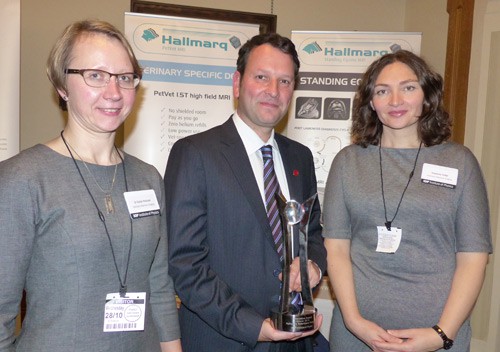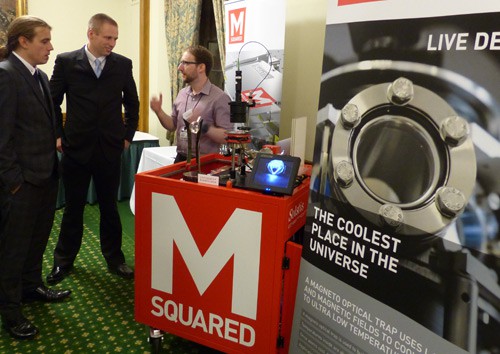
By Margaret Harris
Imagine you’re a veterinarian and a trainer asks you to take a look at a horse. The animal, a champion showjumper, is limping slightly but there is no obvious injury. Exploratory surgery would probably do more harm than good, and the alternative – magnetic resonance imaging (MRI) – isn’t risk-free either. You’d need to put the horse under a general anaesthetic, and you know horses don’t react well to that; in fact, around 0.5% suffer serious injuries while coming round afterwards. And that’s assuming you can even find a scanner big enough to fit a horse. What do you do?
This might sound like a fairly niche dilemma, but for Hallmarq Veterinary Imaging it has become the basis for a thriving business – a business, moreover, that has just won an IOP Innovation Award for the successful application of physics in a commercial product.
At the awards ceremony – which took place last night in the Palace of Westminster, London, just down the hall from the House of Commons chamber – I caught up with Hallmarq’s operations and technical director, Steve Roberts. After sketching out the scenario of the veterinarian and the injured horse, Roberts, a physicist, explained that Hallmarq’s MRI scanner fits around the horse’s leg. This means that equine patients can simply be led into it, sedated but conscious. Sophisticated error-correction and image-processing software helps the scanner compensate for the horse’s movement, and in 15 years of operation, Roberts estimates that veterinarians have used Hallmarq’s machines to scan more than 60,000 horses.

The equine MRI scanner was not the only innovative product on display at the ceremony, however. Another winner, M Squared Lasers, managed to get a working magneto-optical trap through Westminster security – a feat that led the head of Innovate UK, Ruth McKernan, to joke that they’d made the Houses of Parliament “the coolest place in the universe”. I can think of a few atomic physicists who’d quibble with that description: although atoms in a magneto-optical trap are impressively cold (typically a few microkelvin above absolute zero) Bose–Einstein condensates are generally down in the nanokelvin range (three orders of magnitude colder). However, as a former atomic physicist myself, I was certainly impressed with the stability of M Squared’s set-up: the firm’s director, John Nicholls, told me that employees tested the robustness of their Ti:sapphire laser toolkit by chucking it out of a third-floor window.
The other three winners – Metrasens, Silixa and Tracerco – won their gongs for, respectively, a portable security scanner, a novel acoustic sensor and an instrument that uses gamma-ray tomography to inspect undersea pipelines. Tracerco’s technology manager, Paul Featonby, wrote about its award-winning technology in the careers section of June’s Physics World (which members of the Institute of Physics can read here), and I’m hoping that Metrasens and Silixa will soon follow suit. They might have competition, though: as McKernan puts it, “there’s just so much fantastic science being turned into companies” these days.



